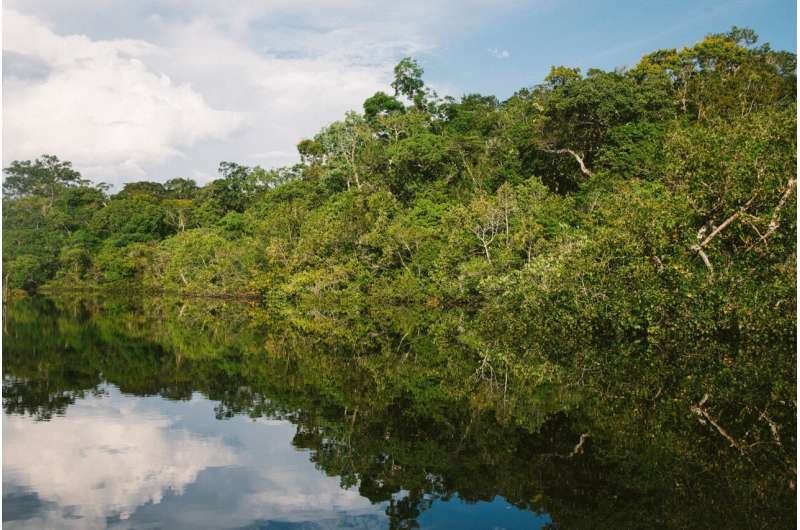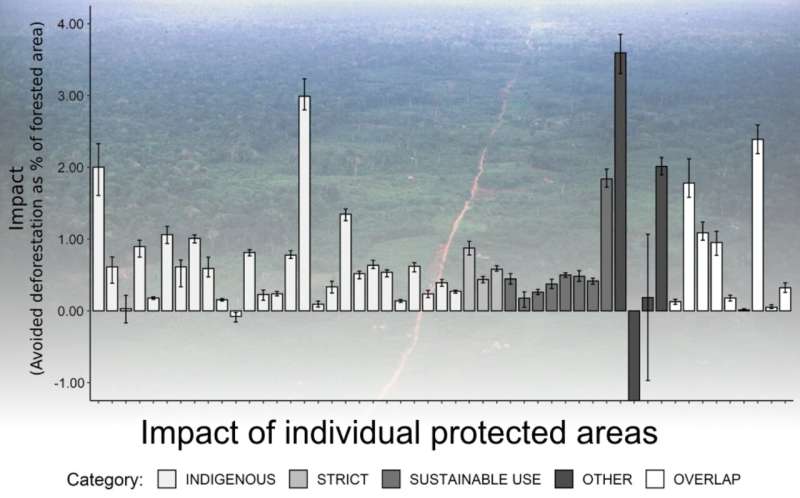Measuring how effectively protected areas in Amazonia fight deforestation

While tropical forests remain threatened and their future is uncertain, the importance of understanding how well individual protected areas avoid deforestation increases. Researchers from the University of Turku and University of Helsinki, Finland, have investigated this question in a newly published study that focuses on the State of Acre in Brazilian Amazonia.
Tropical forests are unique environments that have huge species diversity and also act as important reservoirs of organic carbon, thereby counteracting climate change. However, their area is diminishing due to deforestation, which gives reason to worry both about the survival of their biodiversity and about the increasing carbon emissions. To help to optimize conservation efforts, it is important to understand how well conservation areas succeed in safeguarding tropical forests.
A group of researchers from the Amazon Research Team of the University of Turku and from the University of Helsinki have now compared deforestation rates between protected and environmentally similar non-protected areas in the Acre state of Amazonian Brazil.
"We found that most protected areas have been effective against deforestation and the associated carbon emissions. In total, we estimated that each year the network of protected areas in Acre helps to avoid the same amount of carbon emissions that is produced by more than 120,000 Europeans," explains the lead author of the study, Doctoral Candidate Teemu Koskimäki.
Carrying out this kind of analyses is based on massive amounts of data and requires sophisticated analytical methods. The computer software needed to do this was developed by Postdoctoral Researcher Johanna Eklund and colleagues in an earlier project.
"To quantify the effect of protection, we had to take into account many other variables to find and match protected and non-protected areas that are similar in terms of deforestation threat. For example, the closer an area is to a big city and the easier it is to reach, the more deforestation pressure it faces whether it is protected or not," explains Eklund.

Identifying Differences Helps to Plan Future Conservation Actions
Interestingly, the researchers discovered significant variation among the protected areas.
"Some of the protected areas were very effective, whereas others seemed to suffer from even more severe deforestation than similar non-protected forests. Recognizing these differences and their causes could make the management of protected areas more efficient and help to allocate resources to areas where they are most needed," Koskimäki says.
In the case of indigenous lands, the primary objective is to safeguard space for the local traditional peoples to live in rather than to protect nature. Nevertheless, these areas were found to be at least as effective in preventing deforestation as other categories of protected area. It seems that indigenous peoples have not been called guardians of the forest without good reason.
"We are now starting a new project to assess how climate change is affecting biodiversity and the livelihoods of indigenous communities in central Amazonia. This is done in collaboration with the local people. They are worried, because the seasonal patterns of rains and river floods seem to be changing and becoming less predictable," says Professor Hanna Tuomisto.
In the future, it would be interesting to clarify what the components of a successful protected area are in order to identify and spread the good practices. The results of this new study could be used to identify potential study subjects for future on-the-ground research at the local level. Such research could also focus on other factors that contribute to conservation success than prevention of deforestation, such as how well protected areas prevent selective logging or unsustainable levels of hunting.
The research article has been published in the journal Environmental Conservation.
More information: Teemu Koskimäki et al, Impact of individual protected areas on deforestation and carbon emissions in Acre, Brazil, Environmental Conservation (2021). DOI: 10.1017/S0376892921000229
Provided by University of Turku




















